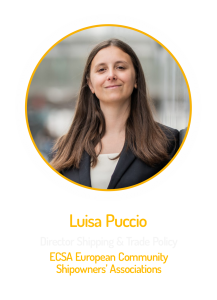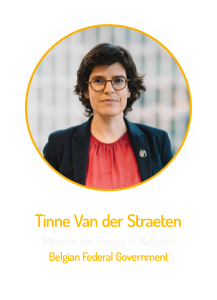As pressure intensifies on companies to meet decarbonisation targets, Guarantees of Origin (GOs) and similar certification schemes have become central tools in renewable energy reporting. These instruments are designed to verify the use of renewable energy and promote transparency. But without stricter controls, they risk enabling greenwashing—offering the appearance of sustainability without the substance.
This article explores how GOs and other certificate-based markets work, their limitations, and what businesses must understand to avoid reputational and regulatory risk.
What Are Guarantees of Origin?
Guarantees of Origin are electronic certificates that prove 1 MWh of electricity was produced from a renewable source. They’re issued by accredited bodies and sold separately from the physical electricity. This means companies can continue consuming fossil-based power while purchasing GOs to claim “100% renewable” operations on paper.
GOs are widely used across the EU under the Renewable Energy Directive (RED). In the U.S., a similar system exists in the form of Renewable Energy Certificates (RECs).
The Problem: Green Claims Without Real Change
While GOs were introduced to drive demand for renewable energy, they’re increasingly criticised for being detached from actual consumption.
1. No link between time or location of generation and use
Companies can purchase GOs from wind farms in Norway while operating data centres in coal-powered Poland. This practice is legal under current rules but undermines the environmental integrity of the claim.
- Source: Transport & Environment – “How green is your data centre?” (2023)
2. Outdated or unbundled certificates
Many GOs are traded on secondary markets, long after the electricity was produced. This allows outdated certificates to support current sustainability claims, further weakening their credibility.
- Source: Energy Monitor – “Guarantees of Origin: Are They Greenwashing?” (2023)
3. Price signals too weak to drive renewable investment
In most European markets, GOs are sold at such low prices (as little as €0.30/MWh) that they offer little economic incentive for additional renewable buildout.
- Source: Ember Climate – “The Greenwashing Risk of Guarantees of Origin” (2022)
Greenwashing in Practice: Real-World Examples
Several reports have documented how major corporations use certification markets to overstate progress toward sustainability:
IKEA and Google: Criticised for certificate-based claims
Both companies have faced scrutiny for claiming 100% renewable energy based on certificate purchases—despite sourcing electricity from fossil-intensive grids in regions like Poland and parts of the U.S.
- Source: The New York Times – “The Big Myth About Renewable Energy” (2023)
European airports
A 2022 Transport & Environment report found that many airports in Europe claimed net-zero operations by buying GOs, without reducing actual emissions or changing energy suppliers.
- Source: Transport & Environment – “Net-Zero Smoke and Mirrors at Airports” (2022)
Regulation Is Catching Up
The European Union is taking steps to tighten the use of GOs and related schemes under the Green Claims Directive and updates to RED II.
- Green Claims Directive (2023): Requires companies to substantiate environmental claims with verifiable data. Generic claims based solely on GOs may no longer be sufficient.
- RED II & III Updates: Introduce stricter sustainability criteria for biofuels and energy carriers, requiring traceability and additionality in renewable sourcing.
- Source: European Commission – “Proposal for a Directive on Green Claims” (2023)
What Better Certification Looks Like
Certification markets are not inherently flawed—but the system must evolve to close loopholes and restore trust.
1. Time-matching and location-based sourcing
Requiring companies to source GOs from the same geographic region and time window as their energy use improves the credibility of claims.
- Example: 24/7 Carbon-Free Energy initiatives by Google and Microsoft aim to match renewable consumption in real time.
2. Digital tracking and automation
Technologies like blockchain and digital product passports can enhance traceability, linking energy use with verified renewable inputs.
- Source: McKinsey & Co. – “The Importance of Traceability in Sustainability Claims” (2024)
3. Book-and-Claim systems with robust third-party verification
For harder-to-track emissions (e.g., in fuels or supply chains), book-and-claim systems are being developed. These require clear separation of certificates from physical goods and rely heavily on trusted auditors.
- Source: Roundtable on Sustainable Biomaterials (RSB) – “Book & Claim Manual” (2023)
What Businesses Should Do Now
To avoid greenwashing, businesses should:
- Audit current certificate use: Are GOs matched by time and geography? Are they recent?
- Communicate with transparency: Clearly state when claims are based on certificates vs. direct renewable sourcing.
- Stay ahead of regulation: Monitor the implementation of the Green Claims Directive and RED III requirements.
- Invest in digital traceability: Use tools that provide verifiable data across the supply chain.
Guarantees of Origin and other certification tools play a valuable role in decarbonisation—but only when used responsibly. Companies must move beyond superficial claims and adopt more credible, transparent approaches to renewable energy reporting.
As regulatory pressure increases and public scrutiny sharpens, the cost of greenwashing will only grow.
Explore topics like certification integrity, traceability tools, and regulatory updates at the InventU Fuel Evolution Congress in Berlin.




















